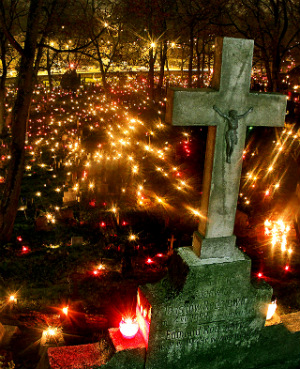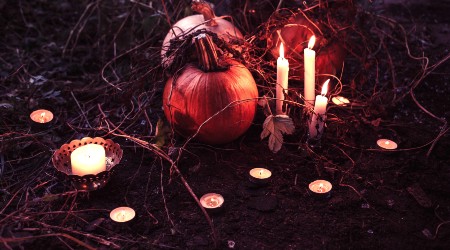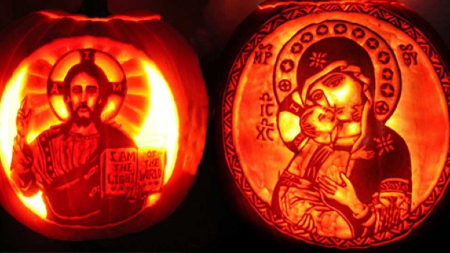We ask you, humbly: don't scroll away.
Hi readers, it seems you use Catholic Online a lot; that's great! It's a little awkward to ask, but we need your help. If you have already donated, we sincerely thank you. We're not salespeople, but we depend on donations averaging $14.76 and fewer than 1% of readers give. If you donate just $5.00, the price of your coffee, Catholic Online School could keep thriving. Thank you.Help Now >
Domenico Fontana
FREE Catholic Classes
A Roman architect of the Late Renaissance, b. at Melide on the Lake of Lugano, 1543; d. at Naples, 1607. He went to Rome before the death of Michelangelo and made a deep study of the works of ancient and modern masters. He won in particular the confidence of Cardinal Montalto , later Pope Sixtus V, who in 1584 charged him with the erection of the Cappella del Presepio (Chapel of the Manger) in S. Maria Maggiore, a powerful domical building over a Greek cross, a marvellously well-balanced structure, notwithstanding the profusion of detail and overloading of rich ornamentation, which in no way interferes with the main architecural scheme. lt is crowned by a dome in the early style of S. Mario at Montepulciano. For the same patron he constructed the Palazzo Montalto near S. Maria Maggiore, with its skilful distribution of masses and tied decorative scheme of reliefs and festoons, impressive because of the dexterity with which the artist adapted the plan to the site at his disposal. After his accession as Sixtus V, Montalto appointed Fontana architect of St. Peter's, bestowing upon him among other distinction the title of Knight of the Golden Spur. He added the lantern to the dome of St. Peter's and it was he who proposed the prolongation of the interior in a well-defined nave. Of more importance were the alterations he made in St. John Lateran (c.1586) where he introduced into the loggia of the north façade an imposing double arcade of wide span and ample sweep, and probably added the two-story portico the Scala Santa. This predilection for arcades as essential features of an architectural scheme, was brought out in the different fountains designed by Domenico and his brother Giovanni, e.g. the Fontana dell' Acqua Paola, or the Fontana di Termini planned along the same lines. Among profane buildings his strong restrained style, with its suggestion of the School of Vignola, is best exemplified in the Lateran Palace (begun 1586), in which the vigorous application of sound structural principles and a power of co-ordination are undeniable, but also the utter lack of imagination and barren monotony of style. It was characteristic of him to remain satisfied with a single solution of an architectural problem, as shown in the fact that he reapplied the motif of the Lateran Palace in the later part of the Vatican containing the present papal residence, and in the additions to the Quirinal Palace. Fontana also designed the transverse arms separating the courts of the Vatican. In 1586 he set up the obelisk in the Square of St. Peter's, of which he gives an account in "Della transportatione dell' obelisco Vaticano e delle fabriche di Sisto V" (Rome, 1590). The knowledge of statics here displayed, which aroused universal astonishment at the time, he availed himself of in the erection of three other ancient obelisks on the Piazza del Popolo, Piazza di S. Maria Maggiore, and Piazza di S. Giovanni in Laterano. After his patron's death he continued for some time in the service of his successor, Clement VIII . Soon, however, dissatisfaction with his style, envy, and the charge that he had misappropriated public moneys, drove him to Naples where, an addition to canals, he erected the Palazzo Reale on a design totally devoid of imagination. His aim was to execute a sharply defined plan in vigorous sequence without concern for detail, employing the means available but without much originality. The chief lack in his work is a want of the distinctive character of an individual creation. Undue spaciousness, tremendous expanse, with an appalling barrenness and coldness and without the inspiration of inner motif , are his ideals.
Domenico's brother Giovanni (b. 1546; d at Rome, 1614) is of less importance. His chief creations are gigantic fountains, spiritless in detail, at Frascati and Rome, where the Palazzo Giustiniani as also ascribed to him.
Join the Movement
When you sign up below, you don't just join an email list - you're joining an entire movement for Free world class Catholic education.
-

-
Mysteries of the Rosary
-
St. Faustina Kowalska
-
Litany of the Blessed Virgin Mary
-
Saint of the Day for Wednesday, Oct 4th, 2023
-
Popular Saints
-
St. Francis of Assisi
-
Bible
-
Female / Women Saints
-
7 Morning Prayers you need to get your day started with God
-
Litany of the Blessed Virgin Mary
All Saints' Day, Halloween and All Souls' Day: What's the difference?
-

Should Christians Celebrate Halloween?
-

Since when did Halloween become a Christian holiday?
-
ADORABLE: A Little Boy's Heartfelt Lunchtime Prayer
-
Scientists Decode 3,000-Year-Old Babylonian Tablet, Revealing Potential Location of Noah's Ark
Daily Catholic
 Daily Readings for Friday, November 01, 2024
Daily Readings for Friday, November 01, 2024 St. Valentine Berrio-Ochoa: Saint of the Day for Friday, November 01, 2024
St. Valentine Berrio-Ochoa: Saint of the Day for Friday, November 01, 2024 Litany of the Saints: Prayer of the Day for Friday, November 01, 2024
Litany of the Saints: Prayer of the Day for Friday, November 01, 2024- Daily Readings for Thursday, October 31, 2024
- St. Wolfgang: Saint of the Day for Thursday, October 31, 2024
- Memorare: Prayer of the Day for Thursday, October 31, 2024
![]()
Copyright 2024 Catholic Online. All materials contained on this site, whether written, audible or visual are the exclusive property of Catholic Online and are protected under U.S. and International copyright laws, © Copyright 2024 Catholic Online. Any unauthorized use, without prior written consent of Catholic Online is strictly forbidden and prohibited.
Catholic Online is a Project of Your Catholic Voice Foundation, a Not-for-Profit Corporation. Your Catholic Voice Foundation has been granted a recognition of tax exemption under Section 501(c)(3) of the Internal Revenue Code. Federal Tax Identification Number: 81-0596847. Your gift is tax-deductible as allowed by law.






 Daily Readings for Friday, November 01, 2024
Daily Readings for Friday, November 01, 2024 St. Valentine Berrio-Ochoa: Saint of the Day for Friday, November 01, 2024
St. Valentine Berrio-Ochoa: Saint of the Day for Friday, November 01, 2024 Litany of the Saints: Prayer of the Day for Friday, November 01, 2024
Litany of the Saints: Prayer of the Day for Friday, November 01, 2024

